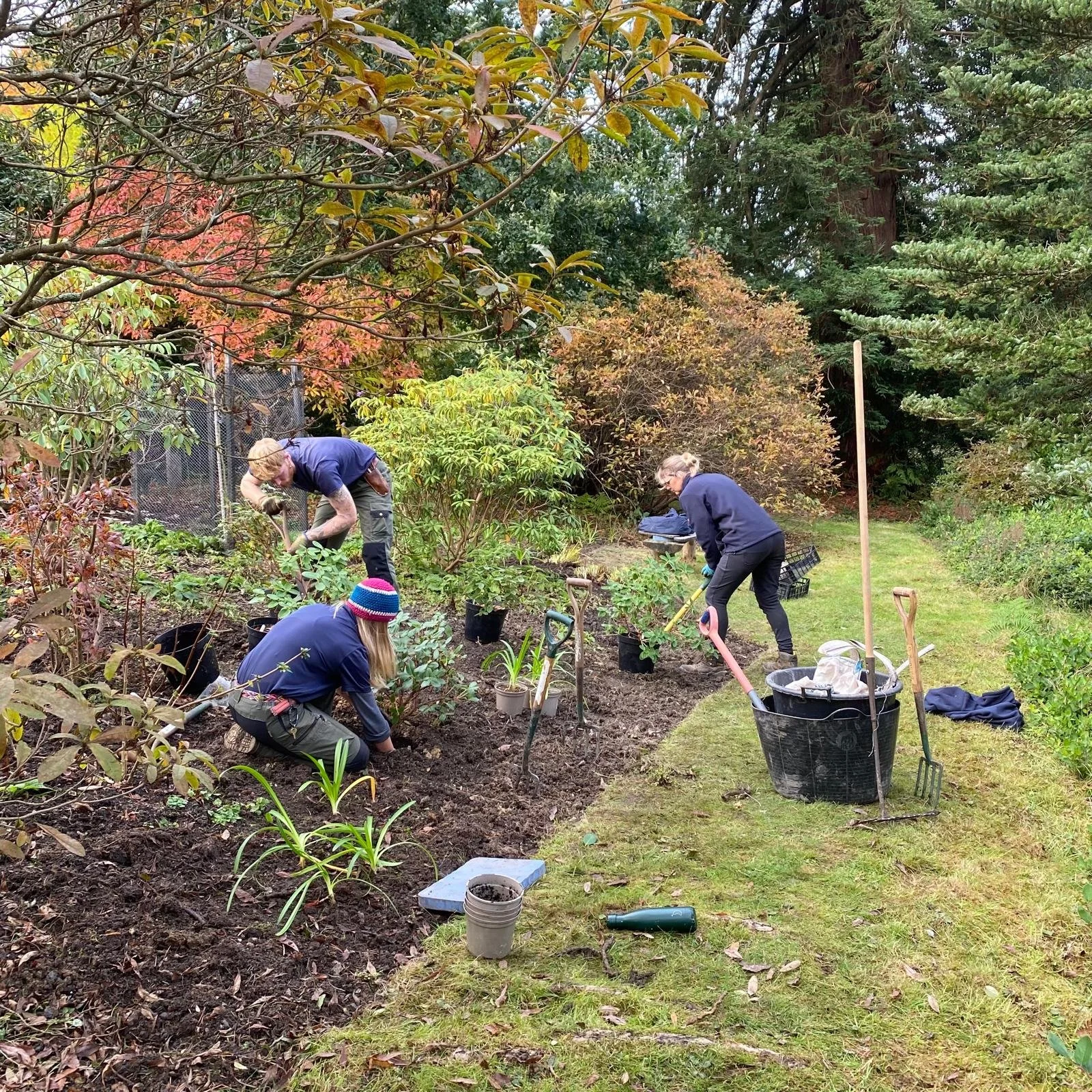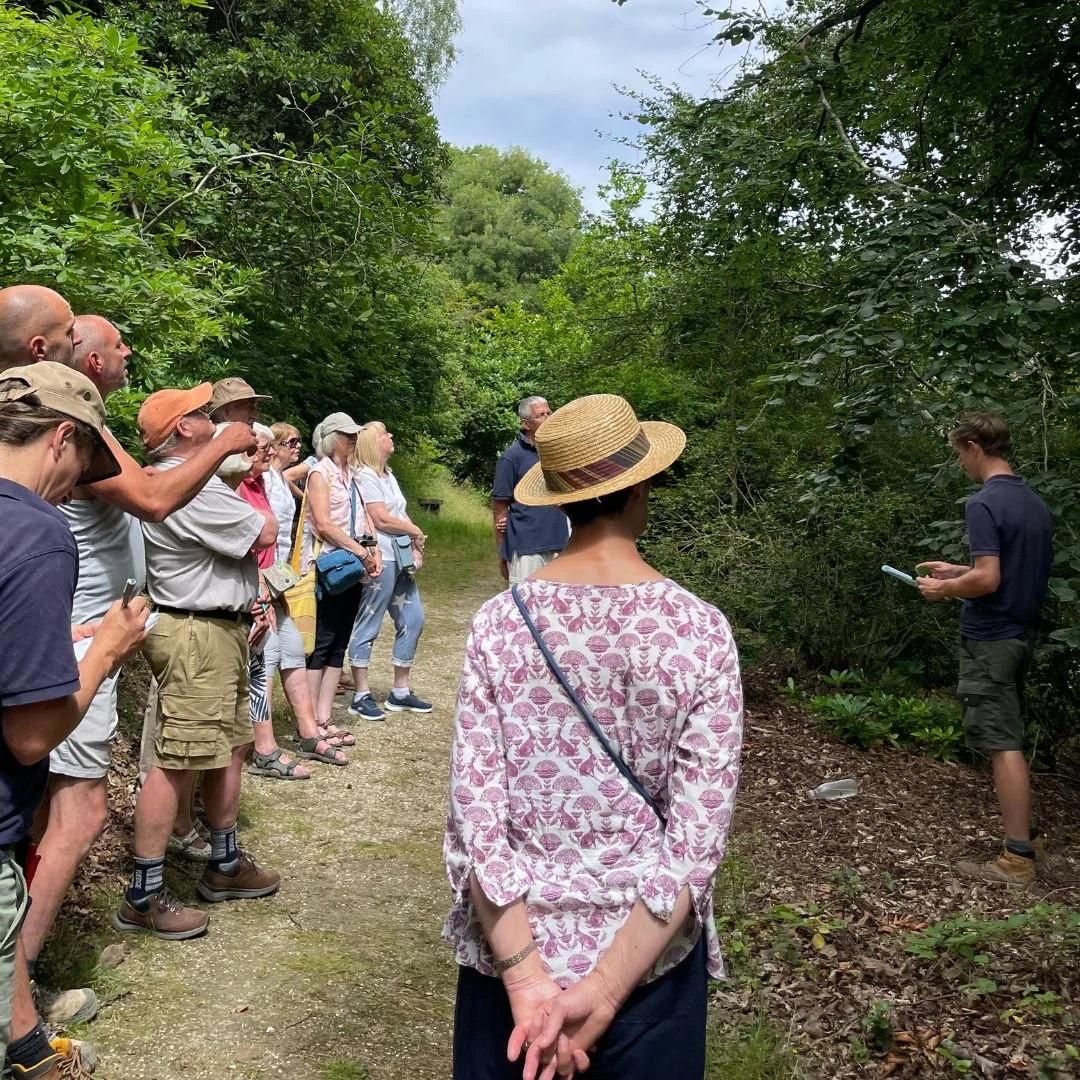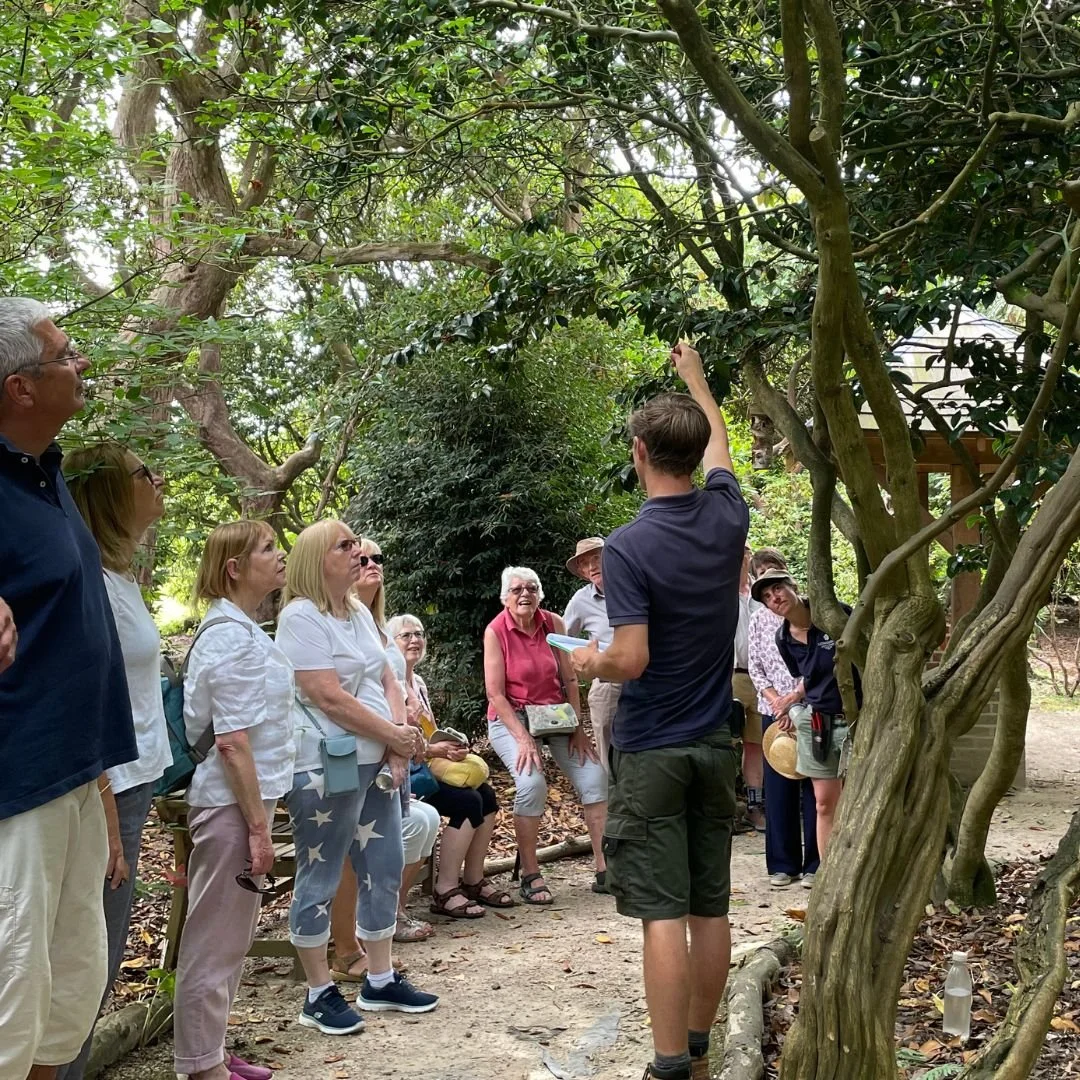Garden News | September 2025
Time waits for no man, including the men and women of the garden team here at Leonardslee!
It’s hard to believe that summer is starting its creep towards another autumn already, as we head into September again and the start of the start of one of my favourite seasons. It’s obviously been an incredibly hot summer this year, with four mini heat waves at the time of writing in what is by all accounts the hottest UK summer on record. This has meant that the garden team have had to do much more in the way of irrigation, and even then, we have sadly lost one or two young plants to drought stress. The lawns have also been looking quite yellow and parched over the last few months, although they will bounce back very quickly as soon as the rains come again. Another result of this ‘super summer’ has been some initial signs of autumn showing their heads as early as July even. We’ve seen flushes of red foliage on a few Nyssa branches, blackberries fruiting much earlier than normal and even large examples of fungi and fungal fruiting bodies across the garden too. In the meantime, there is still plenty of seasonal floral interest to enjoy on your next visit until we start to think about entering ‘proper’ autumn.
Late Summer Floral
Often, the late summer floral interest is more rewarding than that of the height of the season display, maybe because it catches the eye more readily and because you don’t necessarily expect to see as much. The Herbaceous Beds opposite Leonardslee House for instance will still have plenty of late season colour, including Salvias such as ‘Amistad’ and ‘Black & Blue’ flowering until the first frosts (especially if we keep deadheading them), Sedum (Ice Plant), Eupatorium maculatum ‘Atropurpureum’ (Agrimony) and the striking heads of Eryngium agarvifolium (Agarve-leaved Sea Holly) which are still buzzing with bees on a warm day. And speaking of deadheading, make sure you keep on top of this simple job at home. Plants such as Penstemon, Salvia, roses, delphiniums, asters and Echinacea for example can all be deadheaded by removing spent blooms to just above a leaf node below the flower. This will look not only look tidier but also encourage the plant to keep flowering because it will know you have removed the chance for it to self-propagate by seed. Removing this spent head removes the hormone that inhibits further flowering that is sent down the stem. A nice bit of science for you there!
Rock Garden Autumn
Around the house there will also be a huge range of late summer colour in the form of purple-leaved and orange-flowered Canna plants, the exotic Ricinus communis (Castor Oil Plant) and also the impressive Ensete ventricosum ‘Maurellii’, the Red Abyssinian Banana, for example. Looking further ahead, once the colder weather eventually hit these areas we’ll cut back the spent herbaceous material and mulch the ground ready for next year. Some of the plants may have to be brought inside for protection (the banana plants for instance) but fingers crossed this Winter won’t be as harsh as a few years ago where we had extended periods of minus temperatures for several days at a time. The west side of the house has a different planting scheme due to the shadier aspect here. Full of amazing foliage textures and shades, one plant I’m really looking forward to seeing flowering again here is Kirengeshoma palmata, or Yellow Wax Bell, that was only planted quite recently. Not often seen in many gardens, make sure you keep an eye out for the profusion of their primrose blooms.
Perhaps our most vibrant planting scheme at the moment can be found next to the Studio event space. We’re calling it the New Exotic Bed and it’s filled with bright shades of yellow, red and orange. Initially created to house some of the larger plants we moved out of our old glass visitor entrance when it was turned into the new shop, some of the highlights here include an old, large Chamaerops humilis (Mediterranean Fan Palm), Yucca, Fatsia japonica and Tetrapanax ‘Rex’, as well as towering Musa (banana palms) – all chosen for their interesting foliage. We’ve also added colour using Dahlias ‘Waltzing Mathilda’ and ‘Black Jack’ to give a long season of flowering and a range of annuals grown from seed, including Helichrysum (straw flowers) and Tithonia ‘Torch’ (Mexican sunflower).
Although I mentioned earlier that there are some early signs of autumn interest, there are Acers in the garden such as the cut-leaved aconitifolium or Acer palmatum ‘Seiryu’ which can counted on to colour up in September in any year. Both can be found in the Rock Garden for instance, where you’ll also be able to enjoy the Katsura Tree (Cercidiphyllum japonicum) start its seasonal turn to shades of yellow and orange. In the same area, Rhododendron ‘Yellow Hammer’ often gives a second floral flush in early autumn to look out for that towards the end of the month too.
Around the lakes there will be lots of late summer wildlife still busying away. Common Darter dragonflies and Willow Emerald damselflies are both very active in September for instance. There will still be plenty of wildflowers to spot around the estate this month, including Devil’s Bit Scabious (Succisa pratensis) and various types of Goldenrod (Solidago sp.) for example.
Earlier this year we were judged as part of the ‘South & South East In Bloom’ awards as part of the Heritage Garden category. The judge was very positive when he came, despite the fact that we weren’t in our feature Spring bloom time, and although he couldn’t give anything away, I’ve been invited to attend the awards ceremony towards the end of the month so I’ll let you know how we get on in next month’s newsletter. Fingers crossed!
September is a very busy time for the garden team here at Leonardslee as we start to switch from presentation tasks like weeding and edging to bigger restoration work including hedge cutting, pruning and dead wooding. Planting is another great job that ramps up again from September. Whereas much of the summer is too hot and dry to be placing tender, young plants in the ground, as the autumnal weather starts to take over, now is a great time to plan any replanting jobs. The soil will still be warm in September and October (and even November in a mild year), which will aid root establishment, but it will also be moist from the late summer and early autumn showers. This means that the plants will be less likely to suffer from drought stress. New plants will have a couple of months to get their roots down and tap into the soil nutrients before Winter hits and growth stops. We’ll be planting, planning, ordering and quarantining plants for a number of areas here at Leonardslee this month including plenty of shrubs and perennials that will continue to increase our seasonal offer outside of Spring. We plan to update our Herbaceous Beds with the likes of late season asters and an extensive Salvia collection as well as new dahlias, gladioli and interesting grasses. We also plan to redesign and replant the bed on the corner of Daffodil Lawn with a collection of interesting hardy shrubs and herbaceous perennials as part of a phase of works to improve the visitor route to the Loderi Garden and beyond. Another area of development for the coming months is the beds below the café and house, known to the team here as the Step Beds. These are baked in full sun all day so we plan to add a range of shrubs and herbaceous perennials that will thrive in these conditions such as Deutzia, Phlomis, Sissyrinchium, Nepeta and Perovskia for example.
Another job for us at this time of year, and something that you might like to try at home perhaps, is to propagate our precious plants by taking cuttings. This not only safeguards our collection but also gives us new young plants for free! In September you can take semi-ripe cuttings of camellias, rhododendrons and azaleas for example, from this year’s growth.
Gardening Tips for budding gardeners
In September, you can take semi-ripe cuttings of camellias, rhododendrons and azaleas, for example, from this year’s growth. Take the cutting from a non-flowering shoot using a clean, sharp pair of snips, immediately below a leaf node, and then remove the lower leaves and place in a pot with a gritty compost mix. Cover the pot with a cloche or clear plastic bag and mist the cuttings every now and again to maintain humidity, but don’t overwater them or they will rot off. Cuttings will root quicker if they have bottom heat but either way should start producing roots within a couple of months. Good luck!
What to see and do at Leonardslee this summer
Plenty to be getting on with then and plenty to see and do here as we head into September at Leonardslee. Don’t forget there are bookable garden tours on September 1st, 8th, 17th, 22nd and 29th this month. We’re also reintroducing our Tree Walks again from September 10th when Sarah, our Senior Gardener, will lead a seasonal walk looking at some of our most interesting specimens. We look forward to seeing you here in the garden again soon.
Jamie Harris, Head Gardener
Tree Walks again from September 10th when Sarah, our Senior Gardener, will lead a seasonal walk looking at some of our most interesting specimens.
Garden tours on September 1st, 8th, 17th, 22nd and 29th this month.









